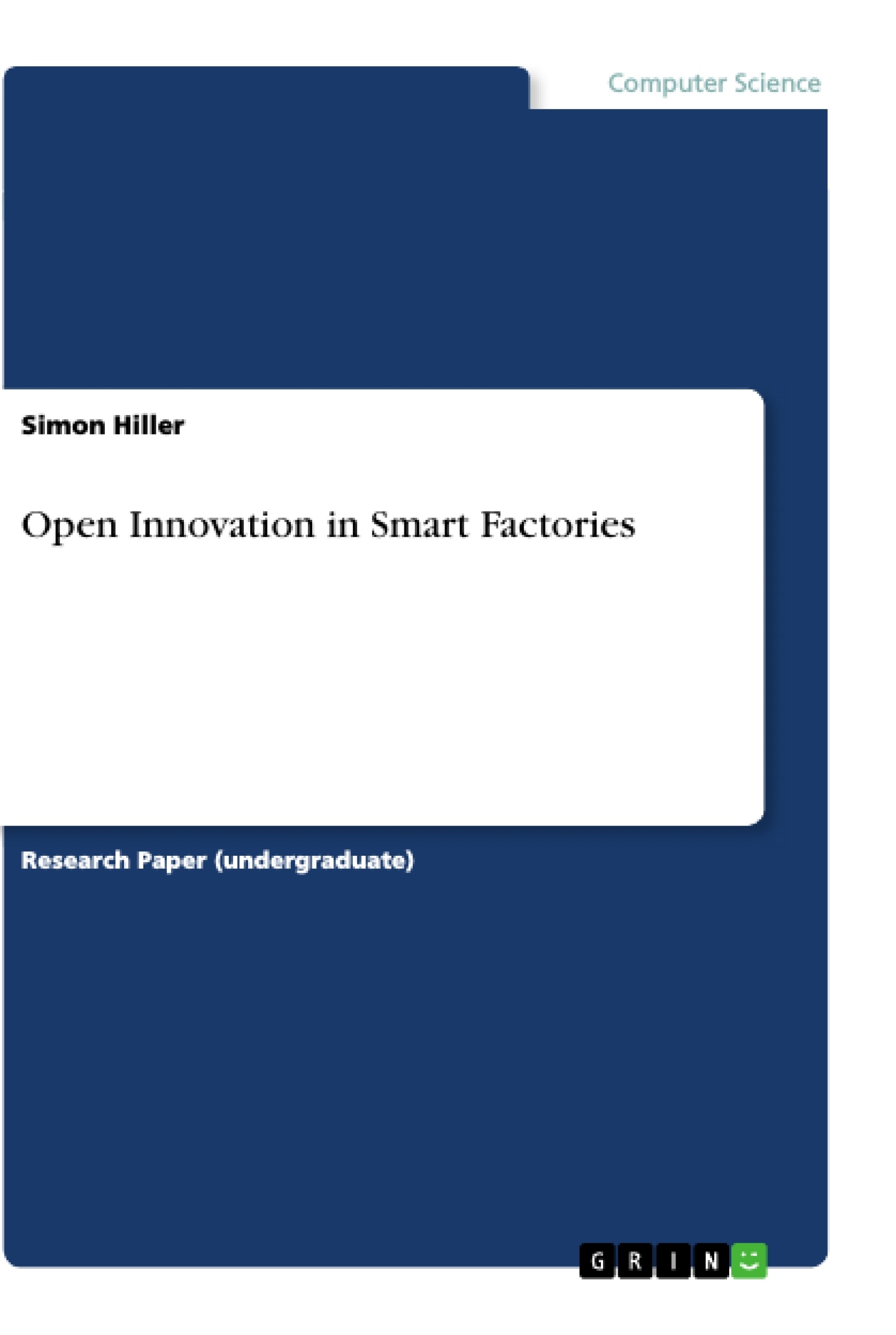In this research project, it will be investigated if and how the methods of Open Innovation can be successfully applied for the development of Smart Factory technologies.
Therefore, methods, pros and cons, challenges, and application fields of the Open Innovation approach will be discussed. Then the author reviews the relevant technological backgrounds of Smart Factories, thereby including sections about their structure, important technologies, pros and cons as well as specific challenges in developing Smart Factory technologies. After that both topics will be looked at together to investigate whether the Open Innovation practices can help to overcome the challenges of technologies in Smart Factory environments. Given the high complexity of Smart Factories, it is not achievable to do this for all included technologies. Therefore, the investigation is limited to one technology. In the examination, the best suited Open Innovation approach will be determined before a strategy for developing this technology will be designed. In the concluding chapter, the most important findings of the research project will be summarized before a conclusion is drawn and an outlook on possible future research and approaches is given.
Inhaltsverzeichnis (Table of Contents)
- Introduction
- Open Innovation
- Structuring Open Innovation strategies
- Criticism
- Factors for choosing a strategy
- Smart Factories
- Smart Factory system architecture
- Key technologies in Smart Factories
- Open Innovation in Smart Factories
- Checking the external factors
- Determining the basis for the strategy
- Developing a strategy
- Recap
- Closure
- Summary
- Conclusion and Outlook
- References
Zielsetzung und Themenschwerpunkte (Objectives and Key Themes)
This research project investigates the applicability of Open Innovation in the development of Smart Factories. The focus is on overcoming the challenges posed by complex technologies and interdisciplinary collaborations in Smart Factory implementations. The project aims to identify a strategy for enabling and accelerating the development of Smart Factories, particularly cyber-physical systems, for small and medium-sized companies in the industrial engineering industry.
- Open Innovation in Smart Factories
- Cyber-physical systems (CPS) in Smart Factories
- Strategies for Open Innovation in CPS development
- Collaboration and knowledge sharing in Smart Factory innovation
- Benefits of Open Innovation for small and medium-sized companies
Zusammenfassung der Kapitel (Chapter Summaries)
- The introduction provides an overview of the research project, highlighting the challenges of implementing Smart Factories and the potential benefits of Open Innovation.
- Chapter 2 focuses on Open Innovation, discussing various strategies for structuring Open Innovation processes, critical perspectives on this approach, and factors that influence the choice of strategy.
- Chapter 3 examines the concept of Smart Factories, exploring their system architecture and key technologies, particularly cyber-physical systems (CPS).
- Chapter 4 investigates the application of Open Innovation in Smart Factories, specifically analyzing external factors that influence the degree of openness in innovation processes, determining the basis for a strategy, and developing a strategy for CPS development.
Schlüsselwörter (Keywords)
The main keywords and focus topics of the text are: Open Innovation, Smart Factories, Cyber-physical systems (CPS), Industrial engineering, Small and medium-sized companies, Knowledge sharing, Collaboration, Strategy development.
- Quote paper
- Simon Hiller (Author), 2020, Open Innovation in Smart Factories, Munich, GRIN Verlag, https://www.grin.com/document/902776



